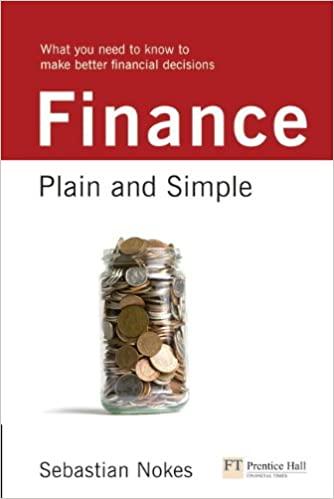Question
(1 point) Suppose three assets have expected rates of return r1=1,r2=2,r1=3.r1=1,r2=2,r1=3. variances 12=1,22=4,32=912=1,22=4,32=9 and covariances 1,2=1,1,3=0,2,3=0.1,2=1,1,3=0,2,3=0. Also suppose a single risk-free asset with return rate
(1 point) Suppose three assets have expected rates of return
r1=1,r2=2,r1=3.r1=1,r2=2,r1=3.
variances
12=1,22=4,32=912=1,22=4,32=9
and covariances
1,2=1,1,3=0,2,3=0.1,2=1,1,3=0,2,3=0.
Also suppose a single risk-free asset with return rate
rf=0.5rf=0.5
The weights for the one fund F of the One Fund Theorem are
w1=w1= , w2=w2= , w3=w3=
Enter numeric values or expressions such as fractions that reduce to numeric values.
The expected rate of return of the fund F is
rF=rF=
and the variance is
F2=F2=
The efficient frontier for the collection of portfolios that may be constructed from the three risky assets and the risk-free asset, is
()=(0)(1)+(F),()=(0)(1)+(F),
r()=(rf)(1)+(rF)r()=(rf)(1)+(rF)
where 00. These may be rewritten as
()=()= ++
r()=r()= ++
where 00.
When designing efficient portfolios, increasing the expected rate of return from rr to r+rr+r requires also increasing the volatility from to ++ where
== r
DON'T COPY FROM OTHER CHEGG EXPERT I SAW THEIR ANSWER AND THEY WERE WRONG

Step by Step Solution
There are 3 Steps involved in it
Step: 1

Get Instant Access to Expert-Tailored Solutions
See step-by-step solutions with expert insights and AI powered tools for academic success
Step: 2

Step: 3

Ace Your Homework with AI
Get the answers you need in no time with our AI-driven, step-by-step assistance
Get Started


